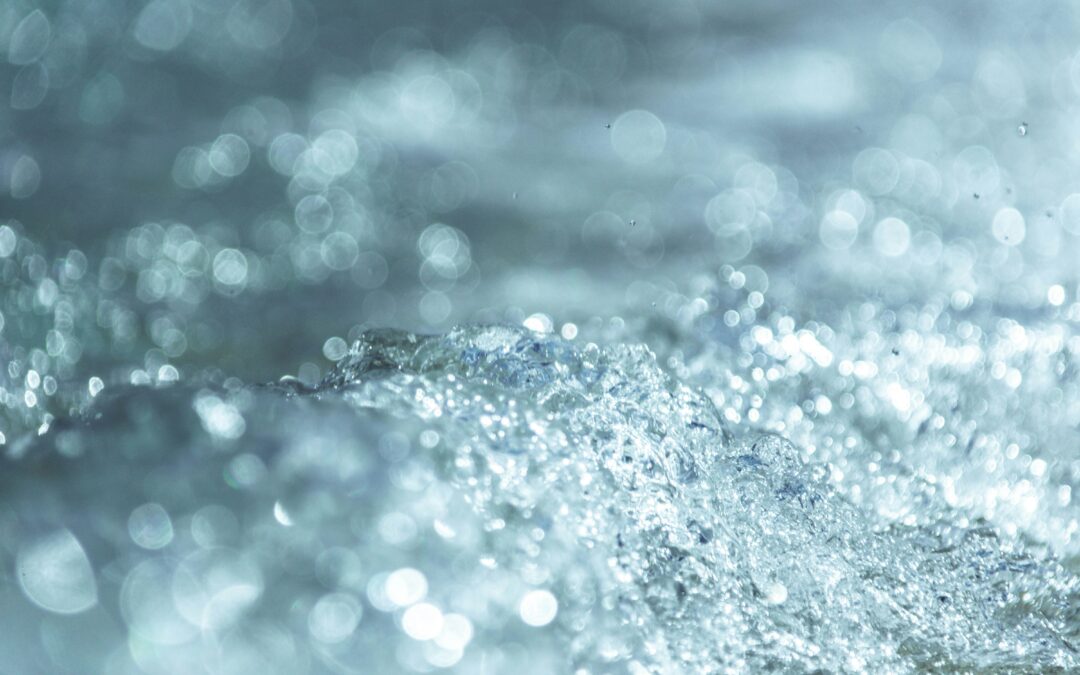By Elise Seyfried
SOMETIMES, DURING WORSHIP, we are asked to remember our baptism. We watch the welcome of a little one at the font. We listen to a confirmand’s words during the Affirmation of Baptism. I must confess: These are not my favorite parts of the liturgy. I don’t remember anything from my actual baptism at the tender age of three weeks. I’m glad I don’t.
Why? It’s because I’m a poor swimmer. I’m terrified of drowning … and thus really fearful of everything from oceans to backyard pools. I can’t imagine how frightening it must have been for me as a tiny baby, to be doused with water by some strange pastor, three times and in front of a whole crowd!
Years later, as a young mother, I dreaded each of my five babies’ baptisms, because I assumed they would squirm and scream when that stream of water hit their little foreheads. Sure enough, they all did. I didn’t blame them. To me, that part of the rite seemed unnecessarily traumatizing. Water baptism reminded me of that big bully at the swim club, the one who kept trying to dunk all the girls when the lifeguard wasn’t looking. I also recalled a huge wave knocking me over at the Jersey Shore—liquid up my nose, eyes stinging, arms flailing around, gasping for breath. How much worse it would be for me to be a member of a denomination that baptizes with total immersion!
Once, I took a Lutheran confirmation class to a Baptist church service. As we watched, a pastor christened 16 teenagers in a row, dipping them each backwards into a big, deep pool. I had to keep looking away, my panic rising each time one of them was plunged into the water.
Why is water even used anyway? I understand the history behind it, the cleansing and rebirth metaphor, the washing away of sin, the reminder that we need water to stay alive. But wouldn’t we all be much happier with a different, drier, less dramatic kind of baptism? Wouldn’t making the sign of the cross on the child’s forehead with oil, and presenting a lit candle have enough symbolism, with no splashing whatsoever from a filled font? Why must our welcome into the family of God involve such stress and discomfort?
I seemed to be in the minority with these feelings about the sacrament. Water is accepted as part of the rite, although different church traditions have varying practices. Some denominations believe in baptizing babies; others choose to wait until older children and adults can give their consent. Those who believe in limbo (that nebulous place, neither Heaven nor Hell, where tiny unbaptized souls are supposedly made to linger after death) have a practical reason to have infants baptized early. I don’t worry one bit about the state of unbaptized babies’ salvation should they die prematurely. I cannot conceive of a loving God who would deny infants paradise, under any circumstances. Maybe it makes sense, if a church doesn’t have a practice of confirmation, to wait until a person is old enough to understand what they’re signing on for, so that they knowingly embrace a life of faith at the time of their later-in-life baptism.
GOD LOVES US FIRST Baptism is not about our action, but God’s. When we are baptized as babies, we are welcomed into God’s family before we are old enough to understand that God chooses us before we choose God. (Of course, that’s assuming we can truly understand at any age!) God loves us even before we learn to love. We can’t do anything to earn God’s favor. Baptism in babyhood makes this clear.
Recently, I read that there are proponents of something called “dry baptism.” It made me wonder if I had finally found my tribe. These folk point to scriptures about being baptized with the Holy Spirit, with no mention of water. A few flickering candles, perhaps the breeze from a whooshing fan, maybe even someone’s pet bird flitting around the sanctuary—couldn’t these effectively symbolize the Spirit of God? Imagine being christened without any need for a toweling off! That would be a baptism without fear and trembling, for those of us who are a wee bit hydrophobic!
Yet the more I consider this option, the less I like it. Waterless baptism feels too … easy … dispassionate … unemotional. It lacks a genuine connection.
WATER CREATURES Maybe another, better way for me to approach baptism with water, is to remember that long before birth we are water creatures. We float in that warm amniotic fluid, totally safe, because our lungs haven’t yet developed for breathing. We have no fear; it is our natural environment. It’s not until the moment of our birth that we take that first gasp of air, emerging from our watery bath to truly join the world.
Perhaps it isn’t our immersion in water, as much as our emergence from water, that is most important in baptism. The dramatic moment of our birth includes our sudden, overpowering need to breathe air in order to survive. God keeps us safe in water, in the womb. We come up and out to live on dry land. That’s where the peril is, but also the joy—the challenge and the hope of living here on earth.
When we depart from our mother’s wombs and begin to breathe, we become our separate, unique selves. Just as in the uterus, we remain nurtured and cradled in God’s warm bath of love. We breathe, and God releases us to be whoever we will be, to make our choices and our mistakes; to have our adventures, our sorrows and our joys.
But the nourishment of the placenta still stays with us. Physically, we will share some of our mothers’ cells for the rest of our lives, long after we grow up, long after we leave home. Our bodies remember, even when our minds forget.
And so it is with God. We are part of God on a cellular level. God is necessary for our survival. Baptism reminds us of our origins as human beings. The birth process is no joke. It is painful for the mother. I imagine it is noisy and disorienting for the baby. But it is a necessary ordeal, leading to the miracle of our earthly lives.
Can I learn to look at baptism that way? Can I accept the temporary trauma I associate with immersion in water? Can I rejoice in the glorious moment of emergence? God has been with us all along, in and out of the water. God is with us, and in us, still.
The next time I witness a baptism, may I hear the lusty cries of a baby being sprinkled, doused or even immersed in water, as a song of praise and thanksgiving for the mess and beauty of life. The baby’s life. My life. All of our lives.
Elise Seyfried is the author of five books of humorous spiritual essays. Elise recently retired after 20 years as director of spiritual formation at Christ’s Lutheran Church in Oreland, Pennsylvania.
This article appeared in the March/April 2024 issue of Gather. To read more like it, subscribe to Gather.


